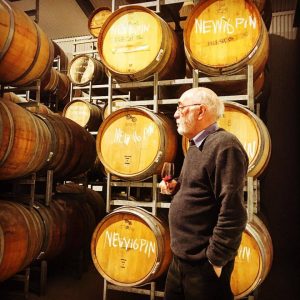With vintage 2018 well and truly behind us, it’s time to take a look at how regions across Australia and in particular, the Adelaide Hills have fared this year. I might even drop a few hints on which 2018 wines you should add to your cellar (wine fridge, spare room wardrobe, kitchen cupboard…).
The big picture…
2018 was a pretty good year!
Growing conditions across most of the country were favourable, with disease pressure low. And that is because it has been so dry.
The Bureau of Meteorology reports that the January to April period was the seventh-driest on record for south-eastern Australia! And total rainfall for Southern Australia was the third lowest on record for April. That probably explains why it seemed like we were endlessly watering our gardens this year!
Tasmania
2018 was one of the shortest vintages on record in Tasmania, but nonetheless, yields were at or above average. The quality of 2018 whites are set to be genuinely outstanding – particularly Riesling and Chardonnay.
New South Wales
The first region to kick off the 2018 Vintage in Australia was the Hunter Valley – picking started in early January. The dry growing period resulted in high-quality grapes, with Chardonnay, Verdelho, Semillion and Shiraz the varieties to look out for.
Western Australia
Western Australia had an exceptional vintage. Good rainfall during spring and early summer and an extended period of sunny but cool weather through February, March and April. The result was optimum ripening conditions with very low disease pressures.
Victoria
Quality of grapes was excellent but a wet December caused some yield losses in parts of the state due to downy mildew. While vintage looked like being early, fruit ripening slowed towards the end with harvest extending out until mid to late April.
South Australia
According to the Wine Grape Council of South Australia warm, dry weather produced exceptional grapes with intense colours and flavours, across all regions. Go SA!
The whole state seems to have produced great quality grapes with limited disease and great ripening. It’s definitely a year to invest in some South Australian wine!
And the Adelaide Hills specifically?
Hamilton Viticulture provides the region with a comprehensive season review as a part of CropWatch SA. Here is an overview of this vintage’s review:
Despite extremes in weather during the vintage 2018 growing season, the final stages of both flavour development and sugar ripening combined to result in wines that will reflect the advantages of growing grapes in the Adelaide Hills.
Dry conditions in June 2017 threatened depleted soil moisture levels, not seen since the drought conditions experienced in the late 2000’s. However, welcome rains in July corrected this deficit which was fortunate as the growing season rainfall was only 69.1% of the Long-Term Average.
Bud-burst was late for the vintage 2018 season, almost as late as recorded in the wet and cold conditions in the unusually late vintage 2017. However, soil temperatures rose steadily resulting in an even bud-burst, although shoot growth was significantly slower than usual. For the second consecutive season, the fruit zone was compact and shaded, and it was not until the second week of November that the rate of shoot growth returned to normal. Fortunately, from a disease viewpoint, rainfall was below average and most vineyards reported minimal disease pressure.
Fruit set throughout the region was average to above average. Canopies developed to be as large as vintage 2016 with full capacity to ripen crop loads. January, February and April were the warmest recorded in the last eight seasons. Fortunately, a cooler than average March enabled ideal night temperatures for colour and flavour development. A long slow ripening, particularly for red varieties, resulted in wines that will be remembered for their depth of flavour and colour.
In other words… get yourself some fabulous vintage 2018 Adelaide Hills wines!!
Fifty vintages and still going strong…
Vintage 2018 was just one in a long history of vintages for Rob – this year marks fifty of them in total!
Next week I will be interviewing Rob and providing you with an insight into the highs and lows or fifty years of winemaking.
What would you ask if you were me?
Post your questions in the comments and I’ll ask for you!

 have a look at what’s happening behind the scenes with some of Rob’s creations which he is lovingly nurturing…
have a look at what’s happening behind the scenes with some of Rob’s creations which he is lovingly nurturing…